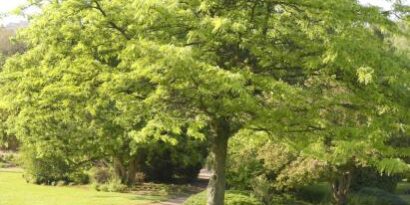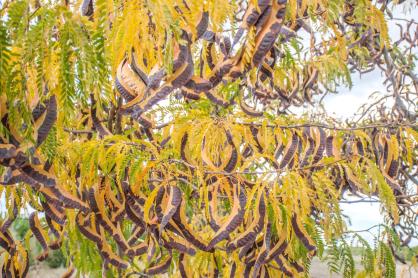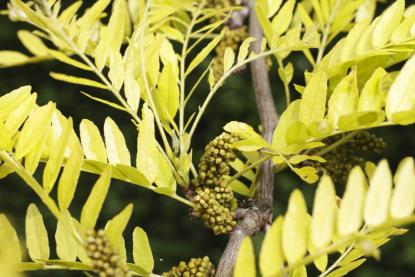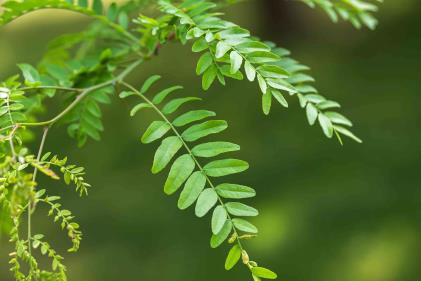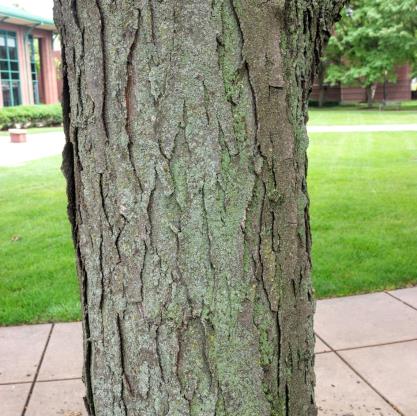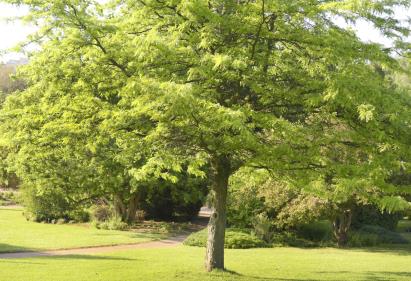
Honeylocust - Gleditsia triacanthos Pea Family (Fabaceae)
The leaves are alternate, pinnately or bipinnately compound, 6-8″ long with 20-30 leaflets. Leaves are bright green in summer; fall color is yellow. Fruit is a reddish-brown to brown pod from 7-18 inches long and about an inch wide. It contains hard, oval seeds and is often irregularly twisted.1
The pulp inside the seed pod is edible which makes the tree an attractant for bees, moths, butterflies, and small mammals.2
This tree is highly salt, wind and drought tolerant once established and resistant to damage by deer and pollution.2
Note: The only Honeylocusts we have in our parks are the Thornless variation. Native Honeylocusts have thorns in the bark
References:
- Honeylocust. University of Kentucky College of Agriculture, Food, and Environment. https://www.uky.edu/hort/Honeylocust. No Publication Date. Accessed January 23, 2024.
- Gleditsia triacanthos. North Carolina Extension Gardener Plant Toolbox. https://plants.ces.ncsu.edu/plants/gleditsiatriacanthos/. No Publication Date. Accessed January 23, 2024.
- https://www.thespruce.com/thmb/6OmsenmGL_AB2WkSy2SFGLJ0jM=/4200×0/filters:no_upscale():max_bytes(150000):strip_icc()/sunburst-honey-locusttrees-2132048-03e4372f49dad64e89863e657771744b3c.jpg
- https://www.thespruce.com/thmb/xTeU5OjrcIhXXCmwb5L2D1eXqaE=/4200×0/filters:no_upscale():max_bytes(150000):strip_icc()/sunburst-honey-locusttrees-2132048-04-88564e580e3742759adad10067321202.JPG
- https://www.thespruce.com/thmb/HNCF79wVwu7ISNkeW9aL5CCTm8=/2000×1329/filters:no_upscale():max_bytes(0):strip_icc()/GettyImages-1060994904-5c36884946e0fb0001c9a088.jpg
- https://www.coldstreamfarm.net/wp-content/uploads/2018/10/honeylocust_thornless_leaves_and_flowers_istock-186841473.jpg
- https://www.fandm.edu/uploads/files/916770159109362348-img-4913-cr2.0.816.3265.3265.full.jpg

